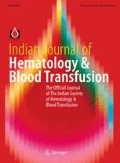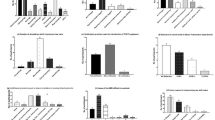Abstract
Lab investigations are essential in patient management and qualities of the tests reports are emphasized. But there is another aspect of quality which is often overlooked and that is timeliness which is expressed as turnaround time (TAT). Mostly the laboratory services are directed at providing a rapid, reliable report at a reasonable cost. However, most laboratories put undue stress on only reliability, where as the clinician gives more stress on how soon (TAT) a report would be available to them. There is no clear definition of TAT, as to which period should be included in determining TAT for a specific test. For laboratory personnel, it would be from the time of receipt of sample in laboratory till report is generated. However, for a clinician, it would appropriate from the time of his/her requisition of a test till the report reaches him/her. The TAT would not be similar for routine tests versus in STAT/urgent tests. TAT would be different for ICU/emergency services. The causes of poor satisfaction level from lab users includes stat and routine test TAT and stat test TAT is considered by majority as the most important indicator of laboratories functioning. Hospital computerization with record of time from test request, sample collection, report generation and receipt of report by clinician would help in generating TAT. Analyzing outliers in TAT in a lab gives insight of causes delay in TAT and the areas need improvement. Laboratories in developing countries are yet to use TAT and analyze them for laboratory improvement.

Similar content being viewed by others
References
Bergman B, Klefsjo B (1994) Quality: from customer needs to customer satisfaction, 1st edn. McGraw-Hill, Maidenhead
Watts NB (1995) Reproducibility (precision) in alternate site testing. A clinician’s perspective. Arch Pathol Lab Med 119:914–917
Howanitz JH, Howanitz PJ (2001) Laboratory results. Timeliness as a quality attribute and strategy. Am J Clin Pathol 116:311–315
http://www.businessdictionary.com/definition/turnaround-time
Lundberg GD (1981) Acting on significant laboratory results. JAMA 245:1762–1763
Howanitz PJ, Cembrowski GS, Steindel SJ, Long TA (1993) Physician goals and laboratory test turnaround times. A College of American Pathologists Q-Probes study of 2763 clinicians and 722 institutions. Arch Pathol Lab Med 117:22–28
Steindel SJ, Howanitz PJ (2001) Physician satisfaction and emergency department laboratory test turnaround time. Arch Pathol Lab Med 125:863–871
Parvin CA, Lo SF, Deuser SM, Weaver LG, Lewis LM, Scott MG (1996) Impact of point-of-care testing on patients’ length of stay in a large emergency department. Clin Chem 42:711–717
Jones BA, Walsh MK, Ruby SG (2006) Hospital nursing satisfaction with clinical laboratory services: a College of American Pathologists Q-Probes study of 162 institutions. Arch Pathol Lab Med 130:1756–1761
Jones BA, Bekeris LG, Nakhleh RE, Walsh MK, Valenstein PN (2009) Physician satisfaction with clinical laboratory services: a College of American Pathologists Q-Probes study of 138 institutions. Arch Pathol Lab Med 133:38–43
Valenstein P, Walsh M (2003) Five-year follow-up of routine outpatient test turnaround time: a College of American Pathologists Q-PROBES study. Arch Pathol Lab Med 127:1421–1423
Steindel SJ, Novis DA (1999) Using outlier events to monitor test turnaround time a College of American Pathologists Q-Probes study in 496 laboratories. Arch Pathol Lab Med 123:607–614
Westbrook JI, Georgiou A, Lam M (2009) Does computerised provider order entry reduce test turnaround times. A before-and-after study at four hospitals. Stud Health Technol Inform 150:527–531
Hawkins RC (2007) Laboratory turnaround time. Clin Biochem Rev 28(4):179–194
Author information
Authors and Affiliations
Corresponding author
Rights and permissions
About this article
Cite this article
Pati, H.P., Singh, G. Turnaround Time (TAT): Difference in Concept for Laboratory and Clinician. Indian J Hematol Blood Transfus 30, 81–84 (2014). https://doi.org/10.1007/s12288-012-0214-3
Received:
Accepted:
Published:
Issue Date:
DOI: https://doi.org/10.1007/s12288-012-0214-3




